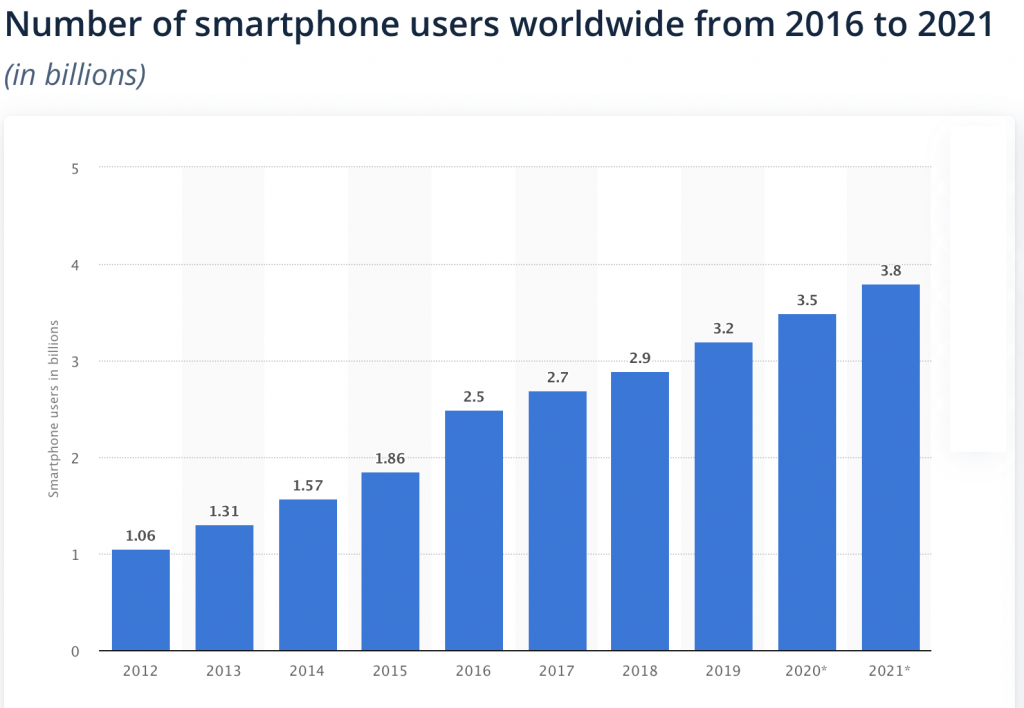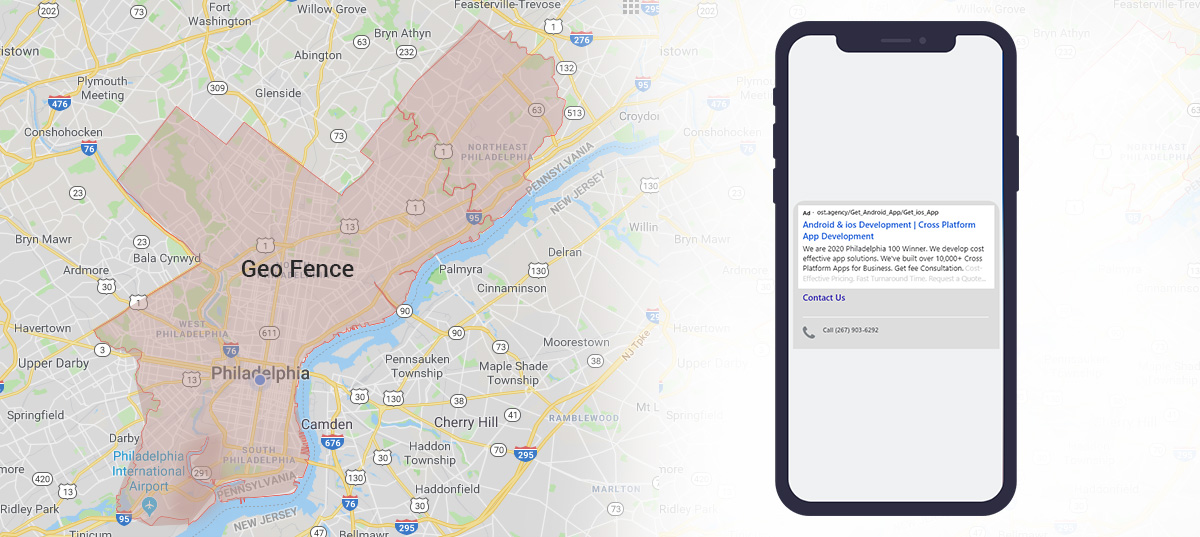What is Geofencing?
Geofencing is a software concept with many modern-day applications in technology. The term “Geofence” in technology describes a virtual parameter superimposed on a real-life geographic location. You can use this geographic parameter to promote your business in specific locations or use the Geofencing concept to build web and mobile app software.
In simpler terms, a geofence is just what it sounds like – a fence around a specific local area which search engines, mobile apps, websites and numerous other technologies can easily recognize.
Geofencing can help you promote your business and keep you and your client updated, for example, on local news and bulletins; Software with Geofencing can provide functions for personal use and even increase safety measures for you and your family. From a pandemic standpoint, geographic technologies can highlight areas that may be hotspots for Covid-19, making holiday vacation planning easier and safer.
One of the main services offered by Geofencing marketing is automatic Location based promotion. An example could be Uber or Lyft: when you land from a flight, or when you travel to a new location, you will immediately get promotions for deals on food and rides in the local area. If you are Wawa or another local PA hoagie-maker, you can send a text or in-app message to a smartphone user who has just entered your Geofence.
From a software perspective, you can also implement Geofencing to provide personal services to users. For example, let’s say you have a child who either walks or takes the bus to school (maybe not now, due to Covid-19, but at some theoretical point). A custom software can set a Geofence around the school, as well as a Geofence around your home. You can designate these to Geofences as ‘safe areas,’ and areas outside of those locations as ‘less safe areas.’ When your child leaves school, the custom software can send a notification to your phone, so you can call and check in on your child as soon as he, she or they leave school.

To work properly, Geofencing services need to tap into local data networks. They can do so by communicating with the following data sources:
- Wi-Fi data
- Radio Frequency Identification (RFID)
- Bluetooth data
- Mobile/cellular data
- GPS
Not all Geofencing technologies tap into all of the above streams of data, though. Depending on the business you are trying to market, you may need to tap into one type of data or another. For example, GPS data is the most powerful, location-specific data to track users through: it literally tracks the location of a user in a geographic location with up-to-the-minute feedback.
If you own a physical business location near a freeway, connecting to GPS data to send promotional alerts may be an excellent strategy for you, because drivers on the highway often have their GPS on. However, a GPS drains battery, and users tend not to like to keep their GPS on in the background of their day-to-day lives.
In other cases you might opt to connect to more passive, constant streams of user information such as mobile and Wi-fi data, when implementing your Geofencing marketing strategy. Take the example of your child coming home from school – you can’t control whether he, she or they have their GPS on all the time, so a custom software can take mobile or Wi-Fi data to track him or her on their way home.
Why is Geofencing Important for Digital Marketing?

Data source from statista.com
With 3.5 billion global smartphone users (and an expected growth to 3.8 billion users by 2021), digital platforms are the best place to grab the attention of a potential customer. However, with such a massive pool of potential customers, businesses need a little help narrowing down their target audience. Getting the best returns on advertisement and promotion investments means marketing to users who have a reason to avail themselves of your services. Geofencing plays a key role in digital marketing strategies because a Geofence enables you to focus on specific local markets and clients who may actually patronize your business.
An example – let’s say you are a local Malaysian food restaurant in the PA area. Your digital promotion will ideally target users within a 20-25 mile radius of your restaurant, who can order your food on the phone, your website, or through third-party delivery services like GrubHub, Seamless or UberEats. You obviously won’t advertise to people in South America or India who have no way of ordering food from you.
How Geofencing Services Can Benefit a Business
With the right Geofencing services, you can enhance your business’s brand loyalty and customer retention rate. The geographic aspect of Geofencing strategies is relatively straightforward: if a customer is in your area, then they probably have more of a reason to avail themselves of your services. Here are some of the main ways a business can recoup value from a Geofenced-enabled service:
Save money
Let’s return to the local pizza restaurant example. If you are only targeting users who are in your area (and can eat your pizza), you can save ad money by not paying for ads which target a larger, more general audience.
Save Time
Instead of spending time researching the spending habits of your previous or prospective customers, a Geofencing service can gather user data based on movement in and out of the Geofence. You can automatically know who is in your area and who is ready to buy.
Get more benefits in short time periods
With Geofenced Search Engine Optimization (SEO) and advertisements, your business can get more results on search engines pages when users search for “pizza shops near me,” for example. SEO work has proven to work quickly and effectively in increasing hits on web pages and web applications.

In other words, if you are a software company in the Philadelphia area, and want to run paid ads only in particular location then through Geo fencing trigger these promotions to your target audience once they enter or leave in your targeted location.
In its best applications, Geofencing can optimize your local listing on search engines and cater your website to those who have regional interest in your business.



